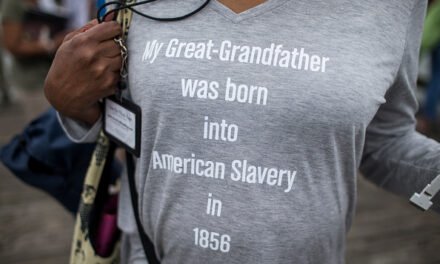At the end of last year, I was chatting with a liberation-focused practitioner. I shared transparently some of my struggles managing the toll of working in DEI as a Black woman. I expressed my appreciation for how authentically she shows up in her work, how unapologetic she was in her approach to equity work, and how she was able to show up in that way and still be successful. She shared something with me that I think about often:
“In my experience, DEI work has a way of stifling our imagination, especially as Black folks… cultivate community and reimagine anyway.”
I felt that. When I heard “stifle our imagination,” I thought about all the ways corporate politics and bureaucracy, fickle leadership, lack of resources and commitment, burnout and trauma as a result of toxic environments can contribute to one’s ability to strategize, put forth solutions, take risks and model courage. All of this is valid and real.
For the past few months, we’ve been engaging in this series to explore what it means to operationalize justice. We are often met with requests for “tools,” checklists, practical application of the principles we espouse — an ask to which this series is intended to be responsive.
And…
Inasmuch as I can understand the call for more pragmatism in the work of DEIJ, I think it’d be intellectually dishonest not to acknowledge that there is no shortage of these things. Black and Brown communities have been offering perspective on disrupting and dismantling racism for centuries and offering up solutions to solve for some of our most pressing and persistent issues. History has shown that whiteness maintains the status quo by opting for what is performative, visible and ‘quick,’ in lieu of changes that address system, root cause, shift power dynamics and require ongoing commitment (time). Perhaps a timely example of this is the recognition of Juneteenth as a federal holiday in the United States while law makers simultaneously delay legislation that would be responsive to voter discrimination, forgive student loan debt (of which Black people and persistent wealth gap are most impacted), anti-lynching bills and reparations (HR-40), among others.
History has shown that whiteness maintains the status quo by opting for what is performative, visible and ‘quick.' Click To TweetThat being said, if this common refrain in response to anti-racism or justice work, “Well, tell me what I am supposed to do, give me the checklist” had a metaphorical twin sibling, it’d be “Well, that [which you are recommending in said checklist] just isn’t realistic.”
Operationalizing justice absolutely requires pragmatism, practicality… AND it requires we reimagine. Operationalizing justice requires we re-evaluate what we deem “realistic” and practical. Operationalizing justice requires we push our mental model that focuses on “why things cannot happen” to an orientation that engages head, heart and hand to answer the question of “How could we make this be?” What resources might be needed? What voices may need to be present? Who might we be able to engage as key power players? How might we think more critically about our timeline to be more responsive (and not reactive)? How can we be responsive to immediate needs while prioritizing strategic imperatives? How do we ensure those leading the work have the skills, knowledge, support and resources to do so with fidelity?
Operationalizing justice absolutely requires pragmatism, practicality… AND it requires we reimagine. Operationalizing justice requires we re-evaluate what we deem 'realistic' and practical. Click To TweetI was working with a client a few months back to pilot an internal leadership intensive on social justice and anti-racism. The program was proposed as a 24-hour time commitment over 6 months. It leverages a cohort model so scheduling was an anticipated logistical issue. Before proposing and getting the “green light” from leadership we went back and forth on whether or not our ask was “realistic.” Will leaders commit to this much time? There’s so much going on. Isn’t it a bit impractical to convene the same cohorts (multiple cohorts) of leaders consistently for this scale of work? The business isn’t used to this—DEI is new, is this really practical? Our mental model was so stuck in ‘why this couldn’t work’ that we nearly convinced ourselves not to move forward with presenting what we believed to be best in class. Four months later, we have had nearly 500 senior leaders go through this experience.
Our mental model was so stuck in ‘why this couldn’t work’ that we nearly convinced ourselves not to move forward with what we believed to be best in class. Four months later, we've had 500 senior leaders go through this experience. Click To TweetThere is something to be said about unpacking the intra-personal as part of operationalizing justice — fear, anxiety, trauma, courage, the mental schemas that are on playback in our heads and can impede our ability to BE, show up in brilliant ways.
Lucille Clifton gifts us with possibility when she reminds us: “We cannot create what we can’t imagine.”
There is something to be said about unpacking the intra-personal as part of operationalizing justice — fear, anxiety, trauma, courage, the mental schemas that are on playback in our heads and can impede our ability to BE. Click To Tweet


















